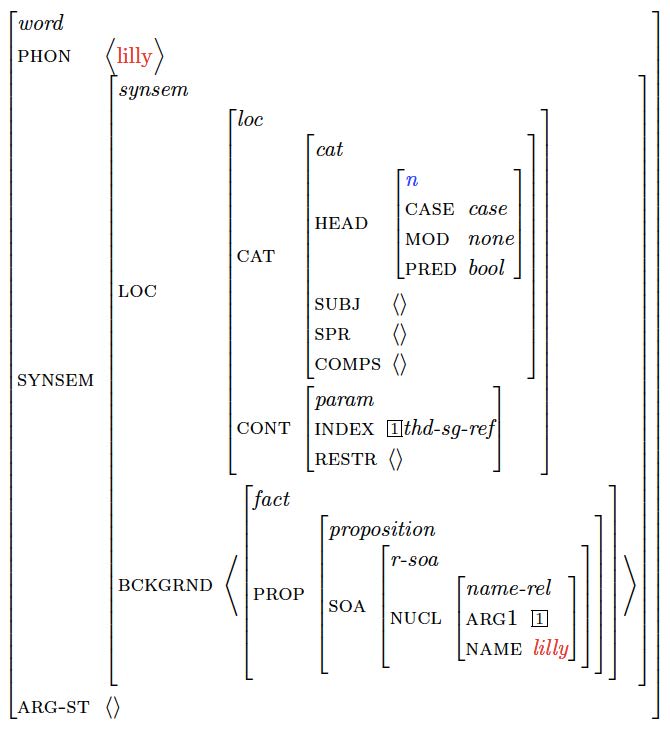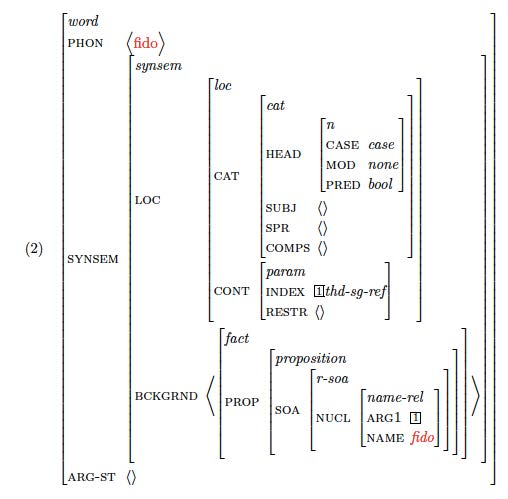HPSG
From a syntactic point of view, the smallest constituents (= pieces) of sentences are words. So, it is natural that our syntactic journey begins with words. If you think about it, you need to know a lot about a word in order to use it grammatically:
- its pronunciation
- its meaning
- its part of speech
- its valence, i.e. the number and type of subjects and objects it combines with
- and perhaps its inflection (things like case, tense, and agreement).
If a formal, i.e. precise grammar is supposed to model what speakers who use the grammar know about their language, then the grammar will have to precisely represent all the information in the list above as well. So, let us look at how Head-Driven Phrase Structure Grammar represents lexical information (= information about words). We will see that similar words have very similar lexical entries.
Words
Let us look at a fairly simple class of words, namely names:
We put two words next to each other, the word Lilly on the left and the word Fido on the right:

